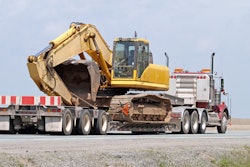
Data recently released by the U.S. Bureau of Labor Statistics shows that 459,000 construction jobs are unfilled, the highest amount since the end of 2022.
Analysis of the report by the Associated Builders and Contractors indicates that industry job openings increased by 43,000 last month and were up by 111,000 from the same time last year.
“November’s 5.4% job opening rate is higher than at any point from the start of the data series in 2000 to the end of 2021," said Anirban Basu, ABC's chief economist.
Construction employment in December totaled 8,056,000, seasonally adjusted. Per analysis, only 2,000 jobs were added to the construction sector in November and there was an increase of 17,000 in December.. On a year-over-year basis, industry employment has increased by 197,000 jobs, an increase of 2.5%, still outpacing the 1.7% job growth in the overall economy.
 Associated Builders and Contractors
Associated Builders and Contractors
A related report shows that construction employment declined in almost a quarter of metro areas between November 2022 and November 2023 as demand tapered in some parts of the country and labor shortages made it hard for contractors to fill vacancies.
With nearly half of contractors indicating in recent surveys done by the associations that they plan to increase their staffing levels over the six months, wage pressures are expected to remain in place through the early parts of 2024.
Generally, the hiring increases are attributed to the megaprojects within the manufacturing sector.
“Manufacturing-related construction continues to surge and now accounts for roughly 45% of the year-over-year increase in nonresidential spending,” said Basu.
According to another federal report released this week, national nonresidential construction spending declined 0.1% in November. Spending was reported as being down monthly in 11 of the 16 nonresidential subcategories.
Private nonresidential spending increased 0.2% for the fifth consecutive monthly increase, while public nonresidential construction spending fell 0.6% in November.
Within the largest segment, manufacturing construction, spending climbed 0.5 percent. Among other large private categories, commercial construction, comprising warehouse, retail, and farm projects, spending declined 0.5%, while investment in power, oil, and gas projects rose 0.8 percent. Spending on offices and data centers, as well as private healthcare facilities, was virtually unchanged.
Public construction spending slumped 2.2% in November despite a minimal 0.1% increase in the largest category, highway and street construction.
Additional declines were recorded in spending on educational structures, which slipped by 0.3%, and 1% on transportation facilities. Spending on other infrastructure categories tumbled even further with declines of 1.6% for sewage and waste disposal, 1.4% for water supply, and 4.4% for conservation and development.
"Despite the monthly setback, spending is up an impressive 18.1% over the past year, with the gains evenly distributed between the public and private sectors, and currently sits just below the all-time high established in October," Basu said.
Fluctuations in the spending and the range of employment figures appear to suggest that the slowdown in hiring is more due to labor shortages than a decline in need.
“Contractors are facing severe labor shortages in regions that are home to industrial megaprojects,” said Basu. “Projects in Arizona and South Carolina, for instance, have paused in recent months due to an inability to find enough skilled workers. As construction spending in manufacturing and infrastructure subsectors continues to surge in the coming months, labor shortages should remain a top concern for the construction industry.”
Data released earlier in December showed that residential building and specialty trade contractors added 1,000 employees in November and 53,000 (1.6 percent) over the previous 12 months. In December, that sector added 5,500 employees and 40,100 (1.2%) year over year.
Also, nonresidential construction employment increased by 1,400 positions on the net in November and over the past year has increased by 3.2% or 147,800 positions. This included heavy and civil engineering adding 3,300 positions in November, while nonresidential building and nonresidential specialty trade lost 1,100 and 800 jobs, respectively. Subsequently in December 2023, the report states that 11,900 positions were added in this category with 157,300 or 3.4% since December 2022.
 Associated Builders and Contractors
Associated Builders and Contractors
He contends that faster hiring has coincided with worsening labor shortages, leading to increases in construction labor costs.
Federal data show that average hourly earnings for production and nonsupervisory employees in construction climbed by 5.9% over the year to just under $35 per hour.
In addition, construction firms provided a wage “premium” of more than 19% compared to the average hourly earnings for all private-sector production employees.
Those increases are rising faster than economywide earnings on both a monthly and yearly basis according to the economists’ analysis.
“The steep rise in pay for craft and other hourly workers, along with an earlier report of record job openings heading into November, indicate that contractors are still struggling to find enough skilled workers,” Simonson said. “The slowdown in employment is a sign of how tight the job market is, not an indication that construction demand is lagging.”















